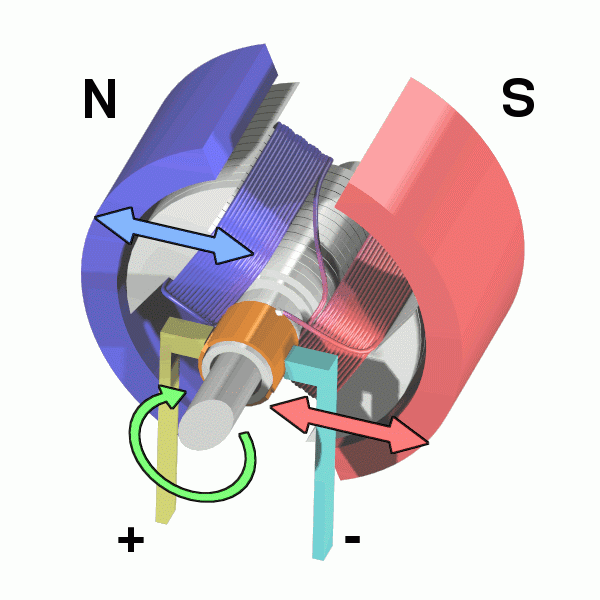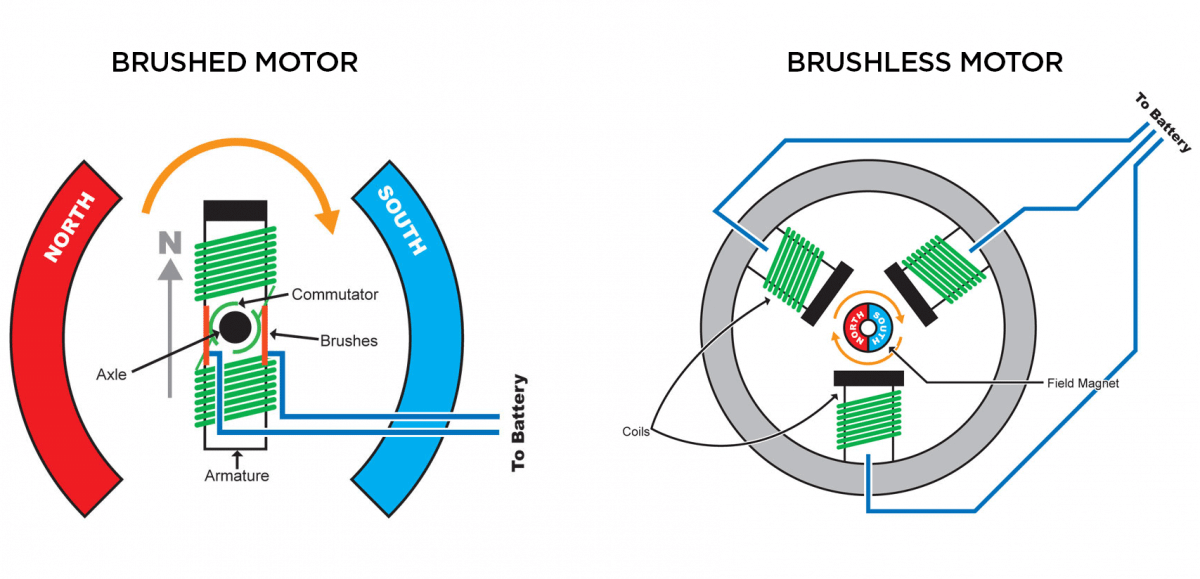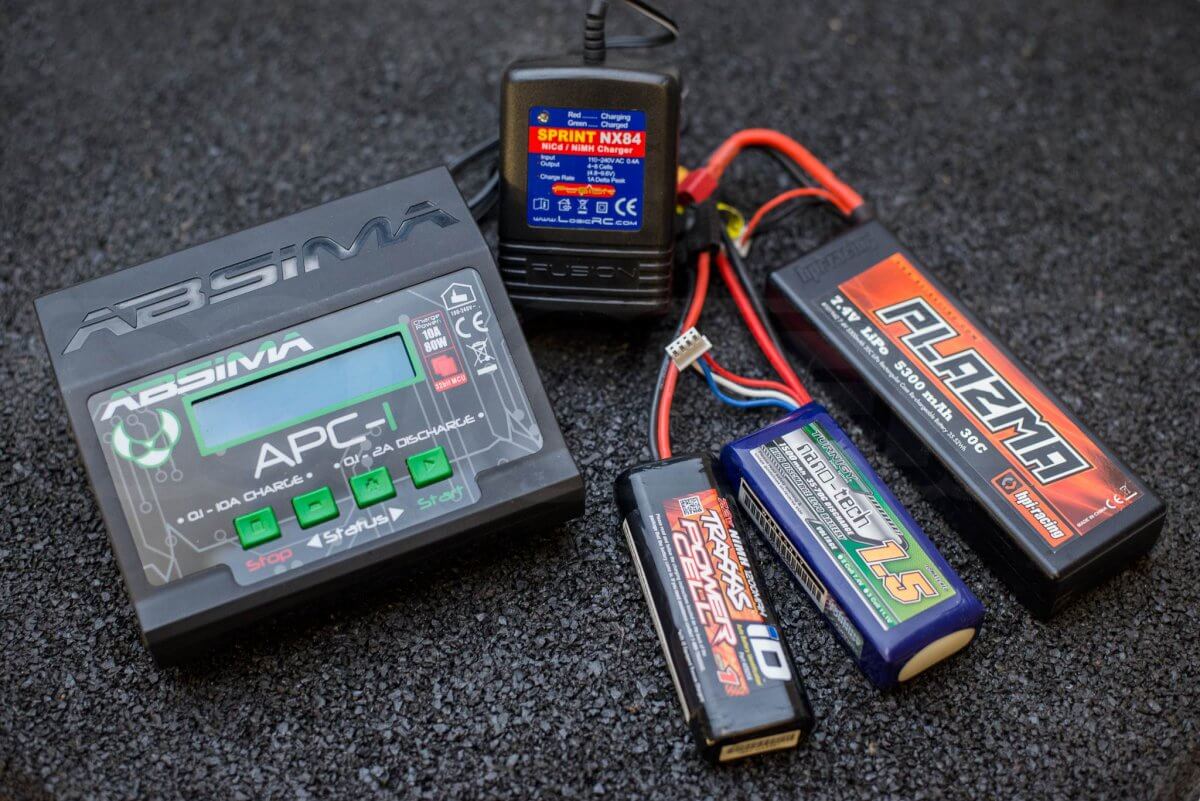Reviews
Funtek Raid Adventure : A low-cost, Land Rover style RC car
Over the past 10 years, brushless has become THE answer when anyone asked about powerful RC models. Whilst the technology is superior, it isn't necessarily the answer for every situation. This article aims to introduce the concept of brushless RC at a basic level, explaining the core differences and offering examples of them in use.
In RC, brushless refers to the design of the motor in the model. If a model motor is not labelled as 'brushless' it is normal to assume that it is a basic brushed motor.
Both brushed and brushless motors use 'charged' coil windings to attract and repel permanent magnets of fixed polarisation and create a rotating force.

Brushed motors use a rotating switch called a commutator to periodically reverse the current direction in the coil, switching that side of the armature to attract or repel the fixed magnets in the motor. This commutator physically rubs against brushes to make and break the connection required and this is where the name comes from. The diagram above (created by Abnormaal and taken from wikipedia) shows a brushed DC motor in action. Note the copper coloured brushes around the central shaft, changing the polarisation of charge in the armature windings.

As you can see from the above diagram, brushless motors differ in design removing the contacting brushes. Many attaching the magnets to the shaft and fixing the coils in place. With no commutator, a controller is required to alternate the current. The majority of RC car brushless motors operate in this manner, requiring an external intelligent ESC to operate the motor.
Beyond selecting 'brushless' or just reading the description when browsing our web-store, the tell-tale sign of a car with a brushless motor are three or more wires running from the ESC to the motor as seen below.

Whilst in a brushed motor there is typically a red positive and a black negative wire connected (as seen in the photo above), brushless motors rely on the ESC to switch up the power signals sent down these three wires.
RC motors are typically listed along with their 'turn' and/or 'Kv' numbers.
Turns (often stated just as T) refers to the number of times the internal wiring wraps around the armature. As a rule of thumb higher turn motors have higher torque and less RPM thus '55T' units are suited to RC crawlers. Lower turn motors have less torque but more RPM so '15T' motors are often fitted to beach buggies and other zippy models such as the Jumpshot below.

Kv numbers help explain the number of theoretical rotations you can expect from inputting 1 volt of power to an unloaded motor, aka RPM per volt. The higher the Kv number, the faster the motor can potentially spin. The key takeaway is that this is the unloaded value which only gives suggestions to the design/capability of the unit.
Enthusiasts will doubtless be jumping up and down shouting YES at this point, but lets look at the advantages and disadvantages to the technology:
If you like to drive an RC crawler (such as the Traxxas Defender) at controlled, low speeds a high-turn brushed RC setup is just fine. They are also ideal for children looking for a an easily controllable, robust system. Alternatively if you want a high-speed, high-power model (such as the Traxxas UDR) where the ESC programming can be adjusted, a brushless setup will be best for you.

Note that Beyond the motor/ESC, many manufacturers will also select components such as bearings and driveshafts that can cope with the output of the brushless 'heart'. Thus it is not unusual to get a car that looks very similar to its cheaper brushed sibling but has the added bonus of being heavily upgraded throughout.
Remember that to get the most out of a brushless car you will also likely end up buying more expensive, energy dense, high-burst-rate, lithium-chemistry batteries.

These require more complicated and expensive equipment to charge, balance, use and safely store. Miss-use of these cells can end in terminally damaging them, or should they somehow get abused to the point where they are punctured, a fire. We do not recommend children handle batteries without adult supervision but this is even more important when dealing with extremely powerful LiPo cells
Brushless RC cars are our bread and butter, check out our webstore to have a dig through yourself. However here are some of our current favourite brushless cars, in order of price (ascending).

We are currently producing a series of short guide articles aimed at novices to the RC scene, browse our site to learn more. Alternatively, if you have a topic you'd like us to tackle or explain, leave a suggestion in our comments section below.
Written by
Tom Begley